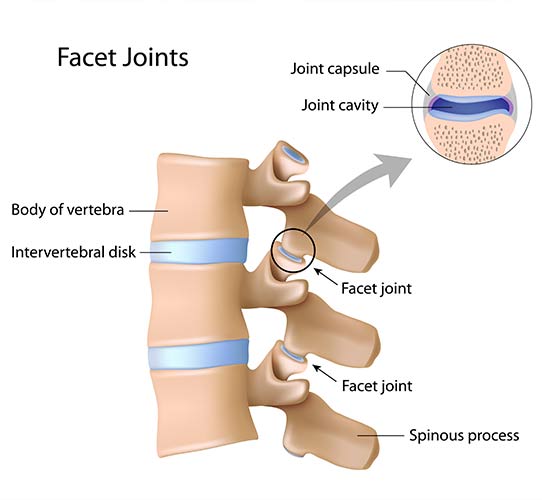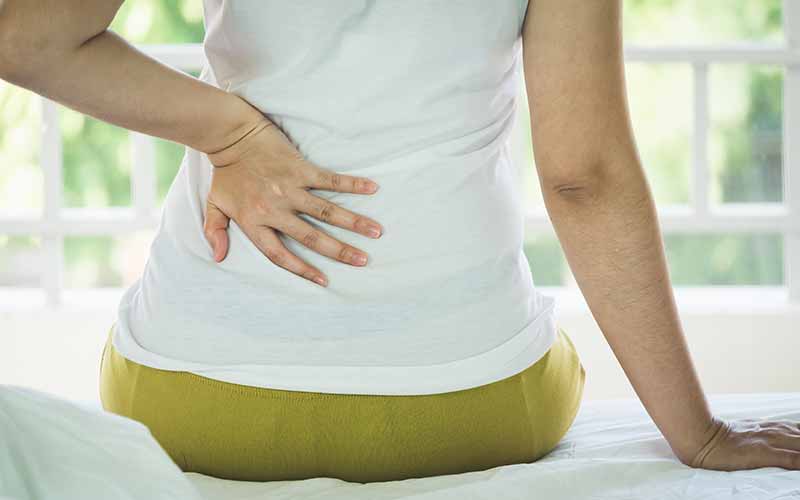You may be experiencing low back pain and are unsure what it means, why it occurs, or what you can do about it. There may be various symptoms that you are experiencing in the low back as well as symptoms in the hips, buttocks, and legs that may be connected to the low back. The following is a description of the different types of low back pain or the different ways low back pain can present.
1. Mechanical Low Back Pain
This can be a constant or intermittent pain in the low back that usually feels more like an ache. The pain may gradually come on overtime or may be the result of excessive activity. Typically, the pain will either worsen or improve with changes in activity or body position. This low back pain may occasionally have referred pain into the buttocks or back of the leg, but the primary pain comes from the back. This type of pain is typically due to an issue with different structures in the area such as joints, muscles, discs, or ligaments.
2. Low Back Pain with Buttocks and Leg Pain
This is usually more constant and severe low back pain with sharp and shooting pain that refers to one or both of the legs. The back and leg pain may also become better or worse with changes in position or activity. This type of pain is usually the result of an inflammation of the nerve tissue in the low back and is commonly referred to as sciatica.
3. Low Back Pain with Other Leg Symptoms
Low back pain and leg pain can also present in combination with other symptoms. These symptoms include changes in sensation in the legs such as numbness, tingling, or “crawling”. Someone may also experience changes in strength in the legs. More often, the pain and other symptoms are more significant in one leg compared to the other. These symptoms are also caused issues with the nerve tissue in the low back, and are usually a progression of pain only in the legs.
4. Other Types of Low Back Pain
There are many different types of low back pain that can occur due to other issues such as fracture, infection, or other conditions. These types of low back pain may present is many different ways compared to those listed above and are usually less common.
What Causes Low Back Pain?

The low back is made up of bones called vertebrae that are separated by fibrocartilaginous tissues that provide cushioning, called the intervertebral discs. Two vertebrae together form joints called zygapophyseal or facet joints, which guide how the spine moves.
The vertebrae are also connected by strong tissues called ligaments to help provide stability and protect the spinal cord. Nerves travel from the spinal cord and supply the muscles and sensation of the lower body. Finally, although not shown in the picture, there are many muscles that attach to the vertebrae to help provide stability as well as help the spine move. All of these structures are closely related and interact with each other to allow proper movement and functioning of the low back and lower body. There can often be issues or changes in these structures that can lead to any of the types of low back pain listed above.
Common Issues Include:
- Trauma – Something such as sports injury or a motor vehicle accident can cause damage to any of these structures and can lead to back pain.
- Natural Aging/Degeneration – Over time as we use our bodies, the wear and tear on these structures can lead to changes in their integrity and functioning and can cause pain.
- Muscle and Joint Imbalances – This can be a cause or a consequence of a low back issue. Changes in the movement of joints or changes in the strength and flexibility of muscles can contribute to low back pain.
- Deformity – The structure of the spine may be changed from birth, which can change the functioning in the low back and lead to pain.
- Others (Less Common) – As mentioned earlier, other issues such as infection, tumours, or disease can also cause low back pain.
How Can a Physiotherapist Help?
As primary care providers, physiotherapists can help if you are experiencing any of the symptoms stated above or other low back issues. A physiotherapist can conduct a comprehensive assessment that allows them to determine the likely cause of low back and associated symptoms.
By determining the cause of the low back pain, a physiotherapist can help treat the cause and associated symptoms through different techniques such
- Manual therapy,
- Exercise,
- Modalities,
- Acupuncture,
- Intramuscular Stimulation (IMS).
As well, a physiotherapist will be able to make appropriate referrals or recommendations for further investigations and treatments such as imaging, surgeons, and injections. These referrals and recommendations can help in the management and care of low back pain.
Finally, a physiotherapist has the ability to determine if there may be something more uncommon or serious that may be contributing to low back pain, which will allow you to get help sooner than later. Seeing a physiotherapist is always a good option when it comes to the management of low back pain.





